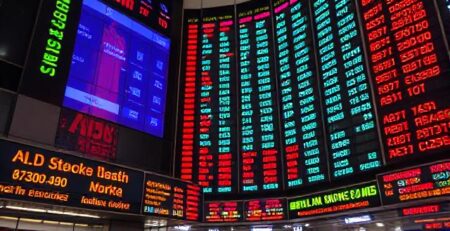When Did BHEL Become Maharatna?
Introduction
Bharat Heavy Electricals Limited (BHEL), a cornerstone of India’s heavy electrical equipment industry, achieved the coveted Maharatna status, signifying its exceptional performance and capabilities. This article delves into the journey of BHEL to attaining Maharatna status, the significance of this status, and its implications on the company’s growth and operations.
The Genesis of BHEL
BHEL’s roots trace back to 1956 when it was established to usher in the heavy electrical equipment industry in India. Initially, it operated as a plain manufacturing Public Sector Undertaking (PSU) with technological support from the Soviet Union. Over the decades, BHEL transformed itself from a modest PSU into a dynamic conglomerate with diverse capabilities.
Evolution and Diversification
In 1974, Heavy Electricals (India) Limited was merged with BHEL, bolstering its expertise and product portfolio. Throughout the 1980s, BHEL was at the cutting edge of thyristor technology, showcasing its commitment to technological advancement.
By 1991, BHEL underwent a pivotal transformation when it converted into a public company. This modification constituted a crucial turning point in its development and made it possible to produce a variety of mechanical, electrical, and electronic equipment for many industries. Although its capabilities were extended to include transmission, transportation, oil & gas, and other related businesses, the company’s primary source of income remained power generation machinery, such as turbines and boilers.
As of 2017, BHEL’s equipment made up over 55% of all installed power generation capacity in India, demonstrating its dominance in the industry. Additionally, the company’s diverse product range extended to supplying electric locomotives to the Indian Railways and defense equipment in collaboration with the Ordnance Factory Board. They also provided simulators to the Indian Armed Forces, showcasing their diverse capabilities and contributions to national infrastructure.
Global Outreach
BHEL’s ambition was not limited to India’s borders. For over four decades, the company has been exporting its power and industry segment products and services to over 76 countries across all six continents. The cumulative overseas installed capacity of BHEL-manufactured power plants exceeded 9,000 MW across 21 countries, including Malaysia, Oman, Iraq, UAE, Bhutan, Egypt, and New Zealand. This global presence underscored BHEL’s commitment to technological innovation and excellence.
Maharatna Status: A Milestone Achievement
In 2013, the Government of India bestowed the prestigious Maharatna status upon BHEL, recognizing its consistently high performance and adherence to the eligibility criteria. This status signified a pivotal moment in BHEL’s journey, empowering the company with enhanced powers and opportunities for expansion.
Criteria for Maharatna Status
A company aiming for Maharatna status must meet several stringent criteria. These include:
1. Average Annual Turnover
The company needed to achieve an average annual turnover of over Rs. 25,000 crore over the past three years, demonstrating robust financial performance.
2. Net Worth
A net worth of over Rs. 15,000 crore is a prerequisite, highlighting the company’s financial stability and strength.
Implications of Maharatna Status
The Maharatna status granted to BHEL opened doors to a myriad of opportunities and benefits:
1. Enhanced Powers
Under the Maharatna scheme™, BHEL’s Board was delegated with enhanced powers, facilitating the expansion of operations, both domestically and globally. This autonomy streamlined decision-making processes and allowed for swift and strategic moves.
2. Long-term Objectives
BHEL set ambitious long-term objectives, aiming to achieve a turnover of Rs. 1 lakh crore by 2016-17. The Maharatna status was a critical stepping stone towards realizing this goal.
3. Diversification
With Maharatna status, BHEL could pursue growth opportunities in diverse sectors such as transportation, renewables, and transmission, complementing its core power generation focus. This diversification enabled BHEL to adapt to changing market dynamics and emerging technologies.
4. International Ventures
The Maharatna status empowered BHEL to participate in large-scale international projects, offering equity participation opportunities. This access to international markets provided access to cutting-edge technology, engineered materials, and new markets.
5. Financial Independence
A Maharatna firm could make investment decisions of up to Rs. 5,000 crore without seeking government approval, enhancing BHEL’s financial independence and agility.
The Current Landscape
As of September 12, 2023, BHEL’s share price stands at Rs. 139.85, reflecting the dynamic nature of the stock market. The market capitalization of BHEL is a substantial Rs. 43,787 crore, a testament to its stature as a Maharatna company.
In conclusion, BHEL’s journey from its inception in 1956 to attaining Maharatna status in 2013 represents a remarkable evolution marked by consistently high performance and diversification. This coveted status has not only empowered BHEL with enhanced powers but also positioned it to pursue growth, both domestically and globally. With its roots in power generation and a commitment to innovation, BHEL continues to play a pivotal role in India’s infrastructure and industrial growth.












